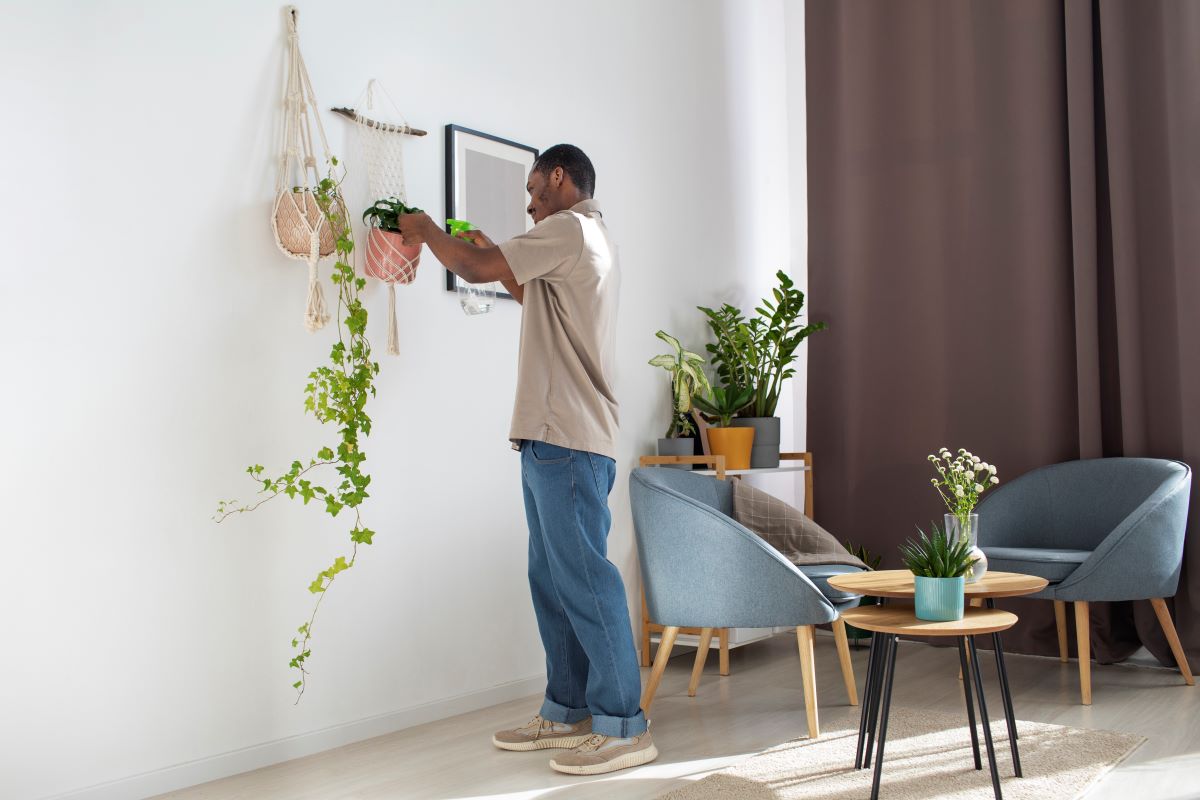
Green building and home decor ideas have become increasingly popular in recent years as concerns over climate change have grown.
There are many ways you can make your home eco-friendlier if you’re concerned about your carbon footprint and want to live more sustainably. Our detailed guide is below; keep reading!
Introduction to Sustainable Home Decor
Being in harmony with the environment is central to sustainability. We must recognize the seriousness of the situation in this era of global warming, climate change, and environmental degradation and act steadily to create a sustainable, eco-friendly future.
Going green is not only a responsible environmental choice, but it is also one of the hottest trends in eco-friendly décor. Green materials are finding their way into every aspect of design, from recycled glass countertops and reclaimed timber floors to insulated wall systems and non-toxic paints. Making environmentally conscious decisions when furnishing your home can have a significant impact on both the environment and your health.
Concisely, here are some eco-friendly home decor ideas:
Benefits of Eco-Friendly Home Decorating
It can increase your health and happiness while also adding warmth and character to your modern minimalist home with natural accents.
Sustainability
Natural materials, like bamboo, wood, rattan, stone, and plant-based materials, are frequently more environmentally friendly and long-lasting than synthetic ones. Natural home decor can reduce the environmental impact of your home.
Health Benefits
The release of negative ions from natural materials, which help to purify the air, can enhance indoor air quality and have positive health effects. It can also narrow down allergies and other respiratory problems.
Aesthetic Appeal
Natural materials frequently have a distinctive beauty and texture that can add personality and warmth to a space.
Home Durability
Natural materials are frequently more resilient and long-lasting, making them a wise investment for your home.
Connection to Nature
Using natural home décor can help bring a feeling of the outdoors inside and create a calming, peaceful atmosphere in your home.
Cultural Importance
The use of natural materials in interior design can be a way to honour their culture or their ancestors’ traditional skills.
Understanding Green Materials and Products for home
People don’t always consider the items in their homes when they think of “green,” as is customary. Instead, they think about setting up solar panels, being more energy-efficient, or using less water. Of course, these are all essential components of sustainable home decor, but other home furnishings also significantly contribute to a healthier environment. Look for items made of these renewable materials in furniture, flooring, and architectural design.
Shopping Second-hand and Upcycling
Invest in antique or upcycled furniture rather than brand-new items for your home. Alternatively, you might be able to reuse some of your previous furniture.
By doing so, you’ll reuse something that was previously used while conserving the resources needed to produce and transport new goods. This implies that less waste and trash will end up in landfills.
Decorating with Natural and Organic Textures
Designing a raw and refined space that subtly layers organic elements, textures, and hues against a background of sophisticated and modern simplicity is at the heart of the Organic Modern style. It draws inspiration from minimalism, mid-century modern, and boho design styles.
The organic feel of the natural materials and architectural details balances the clean lines, allowing the emphasis on the intriguing objects spread throughout the space that add so much warmth.
Implementing Energy-Efficient Lighting Solutions
Energy-efficient lighting involves switching out conventional lamps, for more energy-efficient ones, like fluorescent, CFL, and LED ones. Additionally, it includes appropriate lighting controls like timers or ultrasonic sensor-based controls.
When not in use, lights are turned off automatically, especially in the daytime. In the case of conventional lighting, it uses electronic chokes rather than ballasts, and by using electronic circuitry, it can dim the lights as needed. These initiatives not only lower energy use but also improve lighting quality, boost worker safety, and lessen environmental impact.
Using Non-Toxic Paints and Finishes
Volatile organic compounds (VOCs) are not as abundant in non-toxic paints as they are in conventional paints. The Environmental Protection Agency’s regulation states that the VOC limit for these paints is between 250 – 380 g/L. There are numerous benefits to using non-toxic paints.
- Safe to use
- Odorless
- Variety of option
- Great quality
- Suitable
- Eco-friendly
- Cost-effective
Adding Greenery with Indoor Plants for your home
Here’s a sustainable décor tip you can’t pass up: why not surround your home with some lush, natural greenery? Consider using indoor plants to add natural accents to the sustainable room décor. The eco-friendly home décor idea of using house plants is charming and inexpensive. They fill your house with energizing new energy and spread good vibes. Most of these indoor plants are low maintenance and easily blend in with your home’s decor. If you have a large living room, consider adding some vines and indoor climber plants to give the room a naturally opulent feel.
Creating a Zero-Waste Lifestyle
Living a zero-waste lifestyle simply means creating no waste at all. You abstain from the trash. Going without a receipt at the register, ordering your coffee to-go in a reusable mug, or skipping the straw on your smoothie are all simple steps toward living a waste-free lifestyle.
Minimize, reuse, and recycle all unavoidable waste. Utilizing your creativity and resourcefulness is the secret to leading a zero-waste lifestyle.
Final Thoughts and Tips for a Sustainable Home
Sustainable home design starts with where you choose to build your house, the floor plan you select, the way you decide to power it, and the insulation.
There are many ways to make your home more environmentally friendly, including choosing a sustainable tiny home, eco-friendly room decor or prefabricated home.
Conclusion
There are a lot more things we can do to live sustainably and contribute to the preservation of the environment, but those are effective and simple suggestions. Whatever you decide to do, it will have a significant impact on the environment and make a real difference.
You can’t do everything, of course, but if you’re trying to live more sustainably, this is fantastic because, over time, all your little efforts add up!






